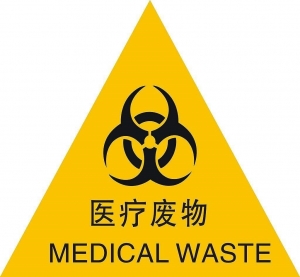Medical waste refers to directly or indirectly infectious, toxic, and other hazardous wastes generated by medical institutions during medical, prevention, health care, and other related activities, and specifically includes infectious, pathological, invasive, medicinal, chemical Sex waste. These wastes contain a large amount of bacterial viruses, and have certain characteristics of space pollution, acute viral infection and latent infection. If they are not strengthened and discarded randomly, they will be mixed into domestic garbage and dispersed into people’s living environment. Pollution of the atmosphere, water sources, land and animals and plants causes the spread of disease and seriously endangers the physical and mental health of people. All medical waste and domestic waste must not be mixed.
Hazards of medical waste
Because medical waste has the characteristics of full space pollution, acute infection and latent pollution, the harmfulness of microorganisms contained in it is dozens, hundreds, or even thousands of times that of ordinary domestic waste. If it is not handled properly, it will become a hospital infection. And social environmental pollution sources, more serious can become the source of disease epidemics. Medical waste contains different levels of bacteria, viruses and harmful substances. Moreover, the organic matter in the waste not only breeds mosquitoes and flies and causes disease transmission, but also odorous gases such as ammonia (NH3) and hydrogen sulfide (H2S) released during the decomposition and decomposition, generating a variety of harmful substances that pollute the atmosphere and endanger human health ; It is also the main cause of cross-infection and air pollution in hospitals. Cross-infection caused by medical waste accounts for 20% of the social cross-infection rate.
1. Pollution of the environment
Exposure to untreated medical waste: Medical waste has a pollution effect on the atmosphere, groundwater, surface water, and soil. Garbage is piled in the open air, which causes the release of a large amount of harmful gases such as ammonia and sulfide, which seriously pollutes the atmosphere. Polychlorinated biphenyls and dioxins emitted from waste decomposition are carcinogens.
Leachate generated by rainwater and biological hydrolysis of pathogens, heavy metals and organic pollutants carried by medical waste can cause serious pollution to surface water and groundwater. The heavy metals in the landfill leachate enter the soil under the action of leaching and erosion of rainfall, resulting in the accumulation and pollution of heavy metals in the soil. Improper treatment of medical waste can also cause secondary pollution to the environment.

2. Human health
There are many pathogenic microorganisms in medical waste, and they are often breeding grounds for mosquitoes, flies, cockroaches and mice. These germs can be transferred to humans through living things in garbage. There may also be hazardous substances such as chemical pollutants and radioactive substances in medical waste, which is extremely dangerous. If the management and training of employees directly exposed to medical waste is not strict, it may cause more harm.
Some people sell infusion sets, plastic bedpans, etc. used by a large number of patients to plastic processing plants to produce daily necessities, and sell them in supermarkets. Drug dealers bought the expired medicines in the people’s hands cheaply, and after changing the lot number and repacking, they made a profit again. Someone sold the used disposable medical devices privately to individual vendors, processed them and sold them to individual clinics for reuse.
The harmfulness of medical waste has attracted great attention from countries around the world. In the construction of relevant laws and regulations, many countries and regions have strict and clear regulations on all aspects and links of medical waste reduction, separated collection, storage, transportation, and disposal. In terms of technical research, a large amount of human, material and financial resources have been invested to conduct in-depth research on the treatment and disposal of medical waste. The main methods are incineration, autoclaving, chemical treatment, microwave radiation, pyrolysis, plasma and electric arc furnace. In contrast, China still has a long way to go in formulating laws and regulations, improving its regulatory system, increasing public awareness, and investing in research.
More recommendations on medical waste:
The main treatment methods of medical waste
Advantages and disadvantages of medical waste treatment methods


